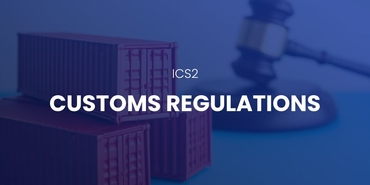
HS codes, HTS codes & TARIC codes



![]()
What is an HS code?
The HS code, in its official term, is the Harmonized Commodity Description and Coding System, otherwise and more popularly known as the Harmonized System (HS).
It is an internationally standardized classification system that categorizes merchandise being traded and shipped across the globe. These merchandise are tagged with a number according to the nature, type, and purpose of the product.
Given the large amount of merchandise being transported across all corners of the globe and the different names for each product in the different countries, having each group of product categorized under its own unique commodity code helps to facilitate product identification and customs clearance and allows for easy tariff and duties calculation in each country.
First introduced in 1988, the HS code was developed by the World Customs Organization, an intergovernmental organization based in Belgium. With the evolution of world trade and global merchandise, the HS code has since gone through numerous classification changes. Revisions took place in 1996, 2002, 2007, 2012, and more recently, 2017.
Today, the HS code system is used by over 200 countries around the world to help determine customs tariffs. It’s estimated that more than 98% of merchandise being traded around the world are classified by the HS code. The data collected is also used to compile and analyze international trade movement.
HS code by country or area
Different countries and/or areas may further categorize products into more specific headings by adding on more digits to the end of the HS code. As such, the term ‘HS code’ may refer to the six-digit internationally standardized product codes or country-specific product codes that also take on the name ‘HS codes’.
However, not all country-specific HS codes have six digits. Some add on a few more digits to further classify the products. As such, you may also find HS codes that are seven-, eight-, nine-, or even ten-digits long.
For example, Singapore’s HS codes have eight digits, while Japan’s has nine.
But regardless of the number of digits of their HS codes, the first six are always fixed and standardized as they are based on the classification determined by the WCO.
Some countries and areas may also have their own term for product codes, such as the HTS code and the TARIC code, more of which we’ll go into later.
HS code format
There are approximately 5,300 commodity codes in the HS code system. These codes are first grouped into specific subheadings and headings, which are then consolidated into chapters that make up the broader sections of the HS code.
In other words:
Section → Chapter → Heading → Subheading → Product HS code
In the recently revised 2017 edition of the HS nomenclature, there are 97 chapters and 21 sections. Here’s a breakdown:
Section Name
Section 1: Animal & Animal Products (Chapter 1-5)
Section 2: Vegetable Products (Chapters 6-14)
Section 3: Animal or Vegetable Fats and Oils (Chapter 15)
Section 4: Prepared Foodstuffs (Chapter 16-24)
Section 5: Mineral Products (Chapter 25-27)
Section 6: Chemicals & Allied Industries (Chapter 28-38)
Section 7: Plastics / Rubbers (Chapters 39 and 40)
Section 8: Raw Hides, Skins, Leather, & Furs (Chapter 41-43)
Section 9: Wood & Wood Products (Chapters 44-46)
Section 10: Pulp of Wood or of Other Fibrous Material (Chapters 47-49)
Section 11: Textiles (Chapters 50-63)
Section 12: Footwear / Headgear (Chapters 64-67)
Section 13: Stone / Glass (Chapters 68-70)
Section 14: Natural or Cultured Pearls (Chapter 71)
Section 15: Base Metals (Chapters 72-83)
Section 16: Machinery / Electrical (Chapters 84-85)
Section 17: Transportation (Chapters 86-89)
Section 18: Precision Instruments (Chapters 90-92)
Section 19: Arms and Ammunition (Chapters 93)
Section 20: Miscellaneous Manufactured Articles (Chapters 94-96)
Section 21: Works of Art (Chapter 97)
The HS code is comprised of six digits, which is broken down into three parts. The first two identify the chapter, the next two the heading, and the final two the subheading.
Here’s an example of HS code 660390 for umbrellas, which fall under footwear/headgear in section 12 as seen from the above table.
![]()
The first two digits, 66, identify the chapter classified as: Umbrellas, sun umbrellas, walking-sticks, seat sticks, whips, riding crops; and parts thereof.
The next two digits, 03, identify the heading: Trimmings, parts and accessories of articles of heading no. 6601 or 6602.
And the final two digits, 90, further break it down into its subheading: Umbrellas and sun umbrellas; garden or similar umbrellas.
Besides the six-digit HS code and the description tagged to each commodity, each section and chapter of the HS code is also determined by legal wordings to ensure that merchandise is being properly categorized and listed.
HS code lookup
Given the potential delays and resulting costs that could accrue from misinformation listed on a Bill of Lading or packing list, it’s of utmost importance to make sure to get your HS code correctly listed.
To begin, you’ll need to know where to find the HS code of your product. There are many websites that can help you look up your product’s HS code, but we recommend using the search tool on the WCO website itself.
A good alternative is the Foreign Trade’s HS code lookup as listed on the United Nations website.
If in doubt, always check with your freight forwarder.
What is an HTS code?
As previously mentioned, different countries may assign additional digits to further break these items down into more specific categories. Plus, they may even go by a different name. The HTS code is one such example.
**HTS codes stand for Harmonized Tariff Schedule codes.**They are seven- to ten-digit classification codes of which the first six is determined by the internationally standardized HS code system.
The United States is one of the many countries that use the HTS codes system. Their HTS codes comprise of four extra digits in addition to the original six in HS codes.
The first two identify the US subheading of the HS code, which determines the customs duties for the imported product. The final two are for statistical purposes for trade and do not play a part in product identification. As it stands, there are more than 17,000 HTS codes currently in use for US imports and exports.
Also known as the Harmonized Tariff Schedule of the United States (HTSUS), it can replace the Schedule B number for exports from the US.
HTS code example
Going back to the example we used with HS codes, the HTS code of umbrella parts being imported into the United States is 6603904100. Note that the first six numbers are exactly the same as its corresponding HS code.
The two numbers that follow, 41, identify the US subheading of the good: Umbrella handles, knobs, tips and caps.
The next two, 00, are for statistical and data collection.
HTS code lookup
To comply with US import and export regulations, you will need to know how to find HTS codes for your products.
Here’s a helpful resource you can use to look up your HTS code - the US International Trade Commission’s HTS code search tool.
If you prefer, you may also download a soft copy of the HTSUS 2018 version. Note that there are over 3844 pages to sieve through. To facilitate your search, we recommend that you identify your section and chapter here and download the corresponding chapter for your traded product.
What is a TARIC code?
TARIC codes are used for imports into the European Union from non-EU countries. Like the HTS code, the TARIC code builds upon the universal HS code by further specifying the product code.
“TARIC, the integrated Tariff of the European Union, is a multilingual database integrating all measures relating to EU customs tariff, commercial and agricultural legislation.”
The TARIC code standardizes the process and tariffs of goods being transported in and out of the EU. It also serves data collection purposes and facilitate customs clearance across the EU.
A TARIC code has ten digits, of which the first six are determined by the international HS code system. The next two is known as the CN (Combined Nomenclature) subheading to further categorize the product. The CN code is required for all exports out of the EU. You may look up your product’s CN code here.
The TARIC code is based on the eight-digit HS and CN codes and adds an additional two digits. This is required for all imports into the EU and it determines tariff rates.
All businesses exporting goods from an EU country to outside the EU are required to list the CN code of their merchandise on their export declaration forms. Similarly, all businesses importing from outside the EU into the EU must list the TARIC code on their import declaration forms.
You may look up your TARIC code on the European Commission’s TARIC consultation page. It details the description of each product, indicates the corresponding tariff code and also provides fiscal information of the good being transported.
Related Articles


